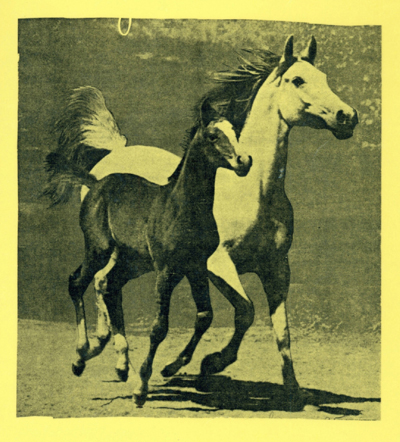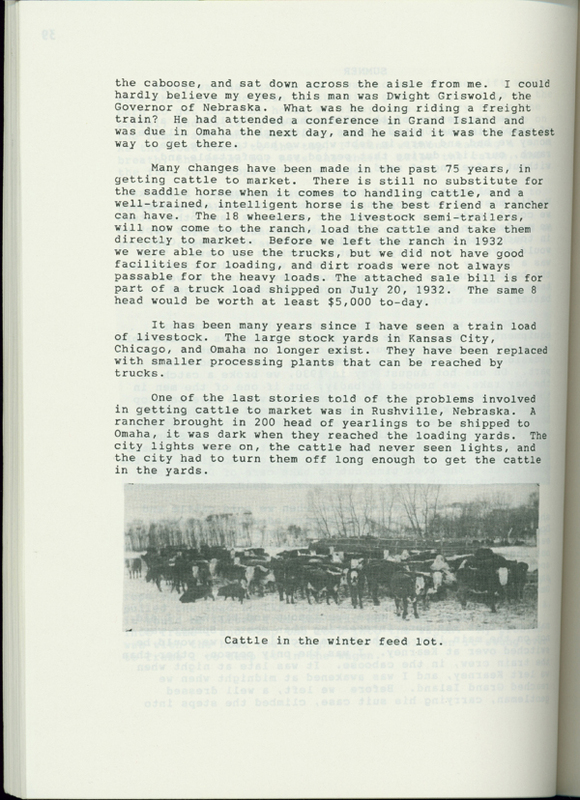082
Item
-
Title
-
082
-
Transcription
-
the caboose, and sat down across the aisle from me. I could hardly believe my eyes, this man was Dwight Griswold, the Governor of Nebraska. What was he doing riding a freight train? He had attended a conference in Grand Island and was due in Omaha the next day, and he said it was the fastest way to get there.
Many changes have been made in the past 75 years, in getting cattle to market. There is still no substitute for the saddle horse when it comes to handling cattle, and a well-trained, intelligent horse is the best friend a rancher can have. The 18 wheelers, the livestock semi-trailers, will now come to the ranch, load the cattle and take them directly to market. Before we left the ranch in 1932 we were able to use the trucks, but we did not have good facilities for loading, and dirt roads were not always passable for the heavy loads. The attached sale bill is for part of a truck load shipped on July 20, 1932. The same 8 head would be worth at least $5,000 to-day.
It has been many years since I have seen a train load of livestock. The large stock yards in Kansas City, Chicago, and Omaha no longer exist. They have been replaced with smaller processing plants that can be reached by trucks.
One of the last stories told of the problems involved in getting cattle to market was in Rushville, Nebraska. A rancher brought in 200 head of yearlings to be shipped to Omaha, it was dark when they reached the loading yards. The city lights were on, the cattle had never seen lights, and the city had to turn them off long enough to get the cattle in the yards.
-
Rights
-
To inquire about usage, please contact Archives & Special Collections, University of Nebraska-Lincoln Libraries. These images are for educational use only. Not all images are available for publication.
 Metzger Memories
Metzger Memories


